Related Research Articles

Francis Ford Coppola is an American film director, producer, and screenwriter. He is considered one of the leading figures of the New Hollywood film movement and is widely considered one of the greatest directors of all time. Coppola is the recipient of five Academy Awards, six Golden Globe Awards, two Palmes d'Or, and a BAFTA Award.

Roger William Corman was an American film director, producer and actor. Known under various monikers such as "The Pope of Pop Cinema", "The Spiritual Godfather of the New Hollywood", and "The King of Cult", he was known as a trailblazer in the world of independent film.

The Godfather Part III is a 1990 American epic crime film produced and directed by Francis Ford Coppola from the screenplay co-written with Mario Puzo. The film stars Al Pacino, Diane Keaton, Talia Shire, Andy García, Eli Wallach, Joe Mantegna, Bridget Fonda, George Hamilton, and Sofia Coppola. It is the third and final installment in The Godfather trilogy. A sequel to The Godfather (1972) and The Godfather Part II (1974), it concludes the fictional story of Michael Corleone, the patriarch of the Corleone family who attempts to legitimize his criminal empire. The film also includes fictionalized accounts of two real-life events: the 1978 death of Pope John Paul I and the Papal banking scandal of 1981–1982, both linked to Michael Corleone's business affairs.

The Cotton Club is a 1984 American musical crime drama film co-written and directed by Francis Ford Coppola and based on James Haskins' 1977 book of the same name. The story centers on the Cotton Club, a Harlem jazz club in the 1930s. The film stars Richard Gere, Gregory Hines, Diane Lane, and Lonette McKee, with Bob Hoskins, James Remar, Nicolas Cage, Allen Garfield, Gwen Verdon, Fred Gwynne and Laurence Fishburne in supporting roles.
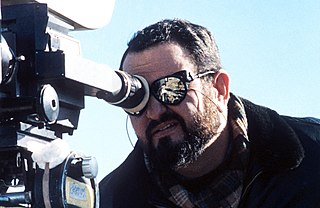
John Frederick Milius is an American screenwriter, film director, and producer. He was a writer for the first two Dirty Harry films, received an Academy Award nomination as screenwriter of Apocalypse Now (1979), and wrote and directed The Wind and the Lion (1975), Conan the Barbarian (1982), and Red Dawn (1984). He later served as the co-creator of the Primetime Emmy Award-winning television series Rome (2005–2007).
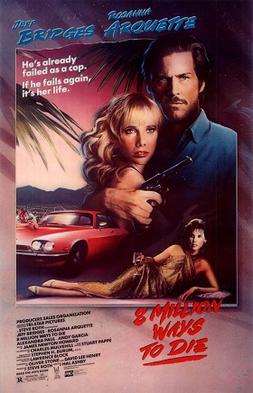
8 Million Ways to Die is a 1986 American neo-noir action thriller film directed by Hal Ashby and starring Jeff Bridges, Rosanna Arquette, and Andy Garcia. It was Ashby's final film, and the first attempt to adapt the Matthew Scudder detective stories of Lawrence Block for the screen. The screenplay was written by Oliver Stone, an uncredited Robert Towne and David Lee Henry.
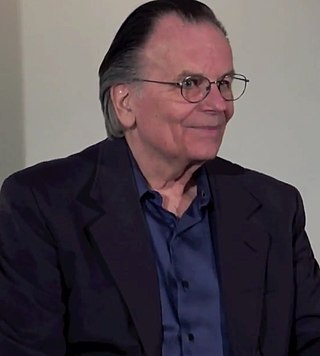
Gary Douglas Kurtz was an American film producer whose list of credits includes American Graffiti (1973), Star Wars (1977), The Empire Strikes Back (1980), The Dark Crystal (1982) and Return to Oz (1985). Kurtz also co-produced the 1989 science fiction adventure film Slipstream, which reunited him with Star Wars star Mark Hamill.

Two-Lane Blacktop is a 1971 American road movie directed and edited by Monte Hellman, written by Rudy Wurlitzer and starring singer-songwriter James Taylor, the Beach Boys drummer Dennis Wilson, Warren Oates, and Laurie Bird.
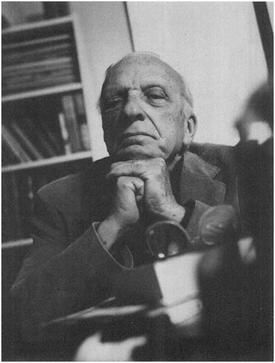
Philip Yordan was an American screenwriter, film producer, novelist and playwright. He was a three-time Academy Award nominee, winning Best Story for Broken Lance (1951).

The Shooting is a 1966 American Western film edited and directed by Monte Hellman, with a screenplay by Carole Eastman. It stars Warren Oates, Millie Perkins, Will Hutchins, and Jack Nicholson, and was produced by Nicholson and Hellman. The story is about two men who are hired by a mysterious woman to accompany her to a town located many miles across the desert. During their journey, they are closely tracked by a black-clad gunslinger, who seems intent on killing all of them.
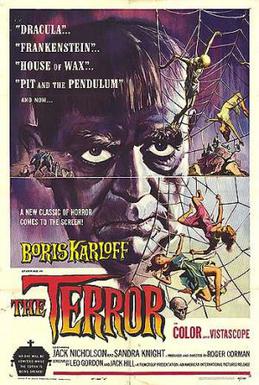
The Terror is a 1963 American independent horror film produced and directed by Roger Corman. The film stars Boris Karloff and Jack Nicholson, the latter of whom portrays a French officer who is seduced by a woman who is also a shapeshifting devil.
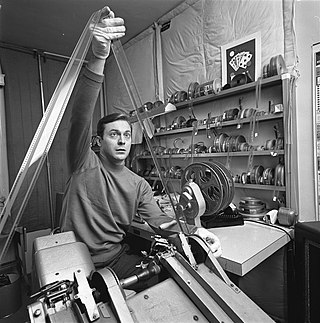
Jack Hill is an American film director in the exploitation film genre. Several of Hill's later films have been characterized as feminist works.

Dementia 13, known in the United Kingdom as The Haunted and the Hunted, is a 1963 independently made black-and-white horror-thriller film produced by Roger Corman, and written and directed by Francis Ford Coppola in his feature film directorial debut. The film stars William Campbell and Luana Anders with Bart Patton, Mary Mitchell, and Patrick Magee. It was released in the United States by American International Pictures during the fall of 1963 as the bottom half of a double feature with Corman's X: The Man with the X-ray Eyes.
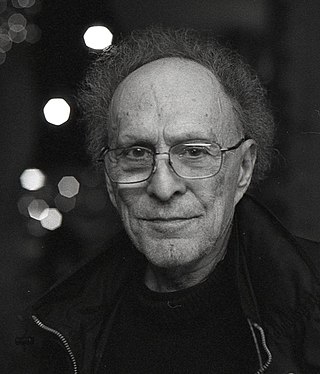
Monte Hellman was an American film director, producer, writer, and editor. Hellman began his career as an editor's apprentice at ABC TV, and made his directorial debut with the horror film Beast from Haunted Cave (1959), produced by Gene Corman, Roger Corman's brother.

Walter Hill is an American film director, screenwriter, and producer known for his action films and revival of the Western genre. He has directed such films as The Driver, The Warriors, Southern Comfort, 48 Hrs. and its sequel Another 48 Hrs., Streets of Fire and Red Heat, and wrote the screenplay for the crime drama The Getaway. He has also directed several episodes of television series such as Tales from the Crypt and Deadwood and produced the Alien films.

10 to Midnight is a 1983 American neo noir-thriller-horror film directed by J. Lee Thompson from a screenplay originally written by William Roberts. The film stars Charles Bronson in the lead role with a supporting cast that includes Lisa Eilbacher, Andrew Stevens, Gene Davis, Geoffrey Lewis, and Wilford Brimley. 10 to Midnight was released by City Films, a subsidiary of Cannon Films, to American cinemas on March 11, 1983.

Harry Tracy, Desperado is a 1982 Canadian drama Western film starring Bruce Dern and Helen Shaver. It was directed by William A. Graham, and filmed on-location in Historical Barkerville, British Columbia. "My Love for You" was sung by Gordon Lightfoot, who also appears as U.S. Marshal Nathan. The film was released on DVD under the title Harry Tracy: The Last of the Wild Bunch in the United States.
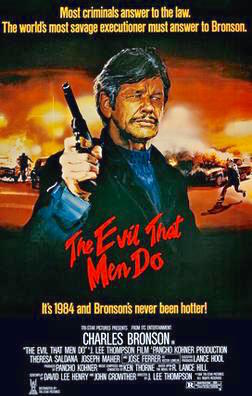
The Evil That Men Do is a 1984 action thriller film directed by J. Lee Thompson, and starring Charles Bronson, Theresa Saldana, and Joseph Maher. The film was adapted by David Lee Henry and John Crowther from the novel of the same name by R. Lance Hill. Bronson plays a former assassin who comes out of retirement to avenge the death of his journalist friend at the hands of a torturer called "The Doctor", who works for various dictatorships worldwide, particularly those of Operation Condor. The film marks the fifth collaboration between Bronson and director J. Lee Thompson, following St. Ives (1976), The White Buffalo (1977), Caboblanco (1980), and 10 to Midnight (1983).

Virginia Van Upp was an American film producer and screenwriter.
The Filmgroup was a production and distribution company founded by filmmakers Roger Corman and Gene Corman in 1959. Corman used it to make and distribute his own movies, as opposed to ones he was making for American International Pictures. The company ultimately folded, however, lessons from running the company helped Corman make a success later of New World Pictures. Filmgroup also produced early feature work of Francis Ford Coppola, Peter Bogdanovich, Charles B. Griffith, Curtis Harrington, Jack Hill, Monte Hellman, Robert Towne and Jack Nicholson.
References
- ↑ "The Evil that Men Do". British Film Institute . Archived from the original on January 21, 2009. Retrieved November 10, 2012.
- ↑ "R. Lance Hill Bio". www.goodreads.com. Good Reads.
- ↑ "R Lance Hill Biography". www.imdb.com. IMDB.
- ↑ Stevens, Brad (April 2003). Monte Hellman. His Life and Films — 2003 (2003 ed.). pp. 103–104. ISBN 978-0786414345.
- ↑ Talbot, Paul. "CINEMA RETRO SPECIAL REPORT: PAUL TALBOT ON ... Celebrating Films of the 1960s & 1970s, www.cinemaretro.com, February 01, 2014. Retrieved June 23, 2015.
- ↑ Silver, Alain; Ward, Elizabeth, eds. (1992). Film Noir: An Encyclopedic Reference to the American Style (3rd ed.). Woodstock, NY: The Overlook Press. ISBN 978-0-87951-479-2.
- ↑ Harmetz, Aljean (January 23, 1987). "A Year Of Hits Makes Paramount The Top Gun In Filmdom". Chicago Tribune . N.Y. Times News Service.
- ↑ Benson, Sheila (1989-05-28). "Losing Sight of the Reasons for Success Film makers sometimes have blind spots when they seek to capitalize on an earlier movie". Los Angeles Times . Retrieved 2011-01-28.